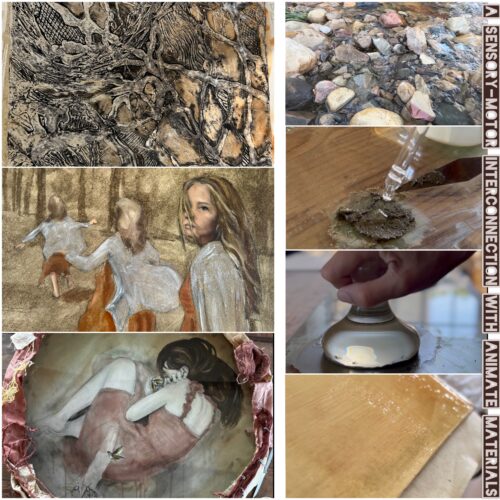
A rare category of objects

For me Tony Cragg’s show at the Yorkshire Sculpture Park was something of a revelation. I had not seen his work since the late nineties and still associated it with a use of recycled materials and of witty, often political statements in the manner of other object sculptors such as Bill Woodrow, Richard Wentworth and Richard Deacon. The sculptures in A Rare Category of Objects at the Park are still built up from individual pieces. But to my surprise the thin slices of metal, stone and laminated wood were arranged in semi-abstract works in which visual references to the human face, The Winged Victory of Samothrace or the Willendorf Venus seemed secondary to the way they had been made.
Perhaps a clue to this is in the video about the work that accompanied the exhibition. In this Cragg is interviewed in German, a reminder of the fact that he has taught in Dusseldorf since the late 1970s. In terms of materials and processes Cragg’s sculptures are reminiscent of a previous solo exhibitor at YSP, Ursula von Rydingsvard. Both artists are based in Germany and hence I was reminded of the German phrase bildende kunst – often simply translated as ‘the visual arts – whose derivation is from the words for ‘making or forming’. This places a far greater emphasis on the process through which images are formed than on their final appearance.


In addition Cragg’s systematic use of structures that explore natural form places him in a tradition that goes back to the work of D’Arcy Wentworth Thompson. The scientist believed that the laws of mathematics could be used to explain the principles of growth and form in living matter. As Edward Juler has described in an essay on the Tate website, his central tenet was that ‘every biological object was effectively a diagram of forces’. Thompson’s seminal work, On Growth and Form, of 1917 helped to shape the ideas of artists as diverse as Henry Moore and Richard Hamilton. Indeed there is an obvious comparison between Henry Moore’s Golgotha and Cragg’s Points of View.

Surrealist sculptors such as Arp and Miro often used organic forms – not least since they were a reminder of the way in which human beings related to other aspects of nature. However, Cragg’s sculptures suggest more obvious comparisons to the work of art nouveau artist such as Gaudi, whose murals at the Parque Guell can be compared to the mosaic surface and curvilinear forms of several of Cragg’s works. The fact that so many art nouveau practitioners whose works Cragg’s resembles are decorative artists raises the old chestnut of how much such applied art idioms can imply specific cultural meanings. After all, the obvious difference between Henry Moore’s Golgotha and the teetering forms of Cragg’s Points of View are the former’s iconographic references to the crucifixion. While many of Cragg’s sculptures resemble decorative pieces such as those of the glass-maker, Tiffany, the exception is Minster, the earliest work in the exhibition and the only one which comprises found objects. Here the hierarchical structure of logically diminishing forms suggests underlying references to a cathedral and to a trinity of figures. In this context it is interesting to compare it to Andy Goldsworthy’s similar trio of sculptures and to the less obviously symbolic work of Michael Grab, who has described himself as ‘an arranger’ of stones rather than a sculptor.

In viewing the exhibition I tended to prefer these earlier works. I even found myself looking wistfully at photographs of Tony Cragg’s performance-based sculptures where he wrestled with cardboard boxes or portrayed himself with his ear-flaps up and down. In part, of course, this is because, as I get older, I am bound to fall victim to nostalgia. But it is also because I prefer the classical virtues of harmony, symmetry and proportion to the language of the language of a world in which the scientific and conceptual structures are becoming increasingly fluid and organic. Perhaps this is proof, if proof were needed, of the fact that contemporary art continues to reflect the times in which it is made.





